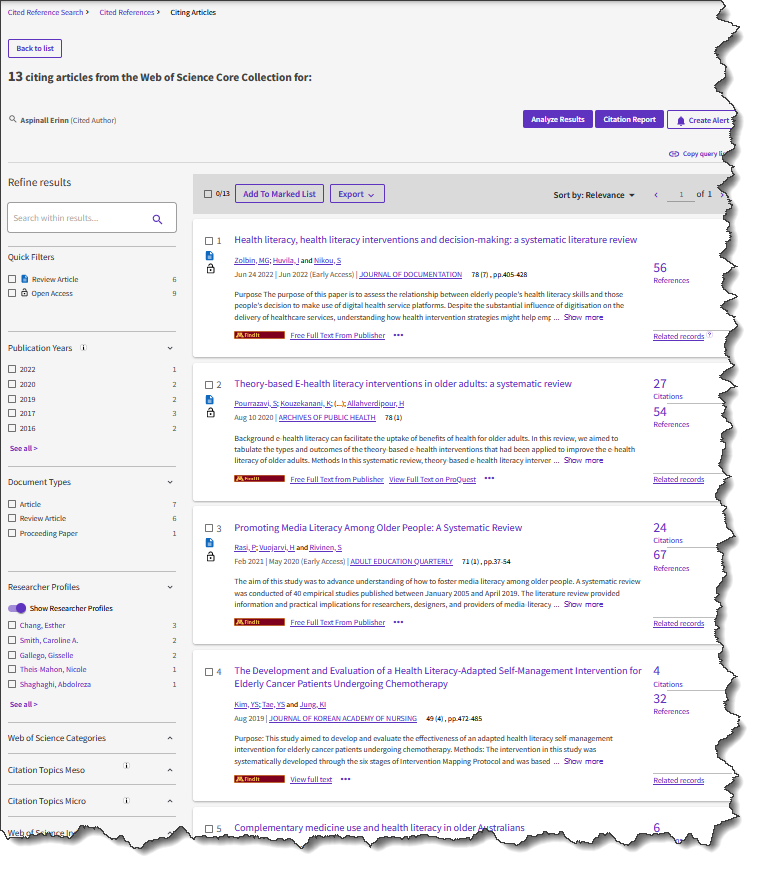WEB OF SCIENCE
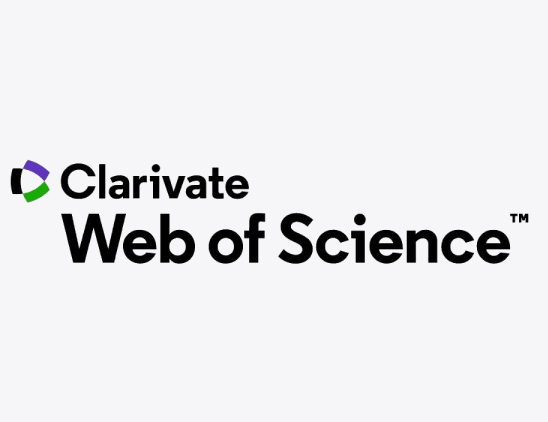
The Web of Science (WoS; formerly known as the Web of Knowledge) is a paid platform that gives users access to multiple databases containing reference and citation information from academic journals, conference proceedings, and other documents in a variety of academic disciplines. Usually, users can access these databases online. It was first created by the Institute for Scientific Information and was published in 1997. Clarivate is the current owner of it.
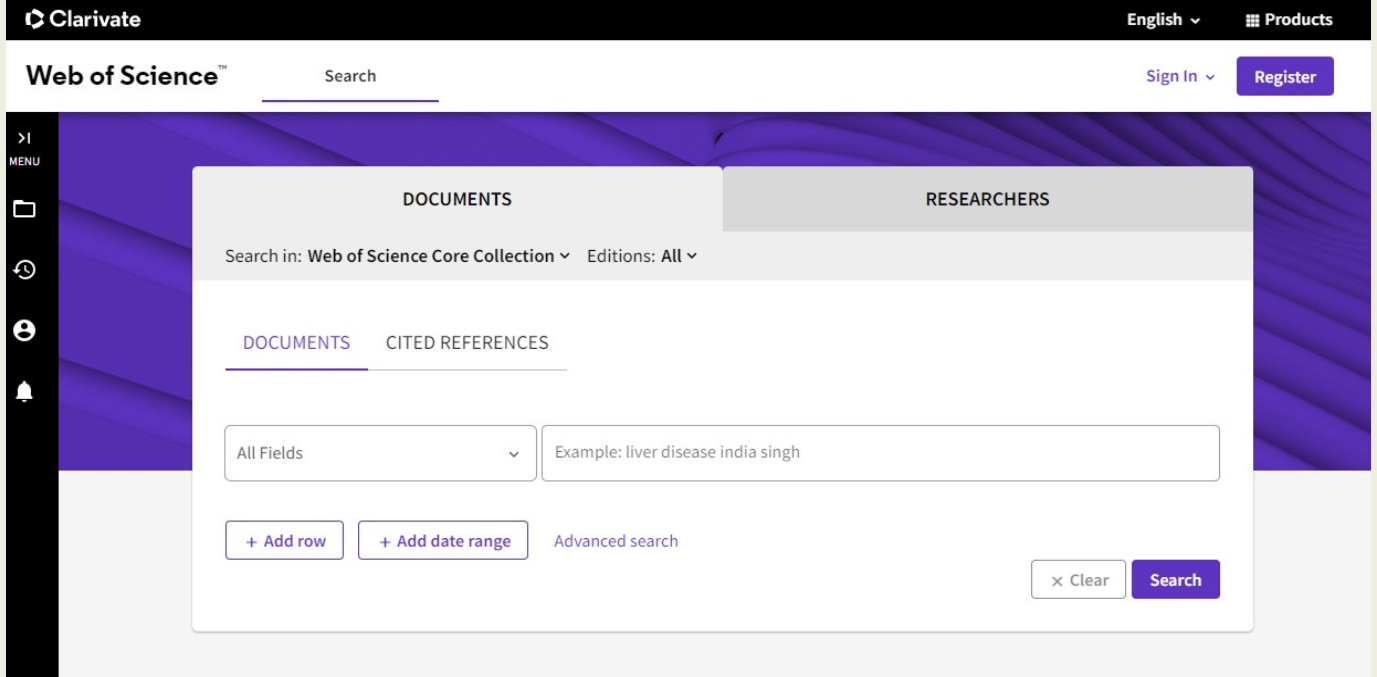
Figure 1.1
How to Search in Web of Science:
When you log in to the platform, you will immediately be dragged to Web of Science's Home page where the basic search box is available. Enter your search terms in the box (es). You can choose where Web of Science should look up your term using the pulldown selections on the left-hand side. These menus include Topic (for keywords), Title (words found in the article title), and more. Additionally, you can choose which years the database searches through the filters.
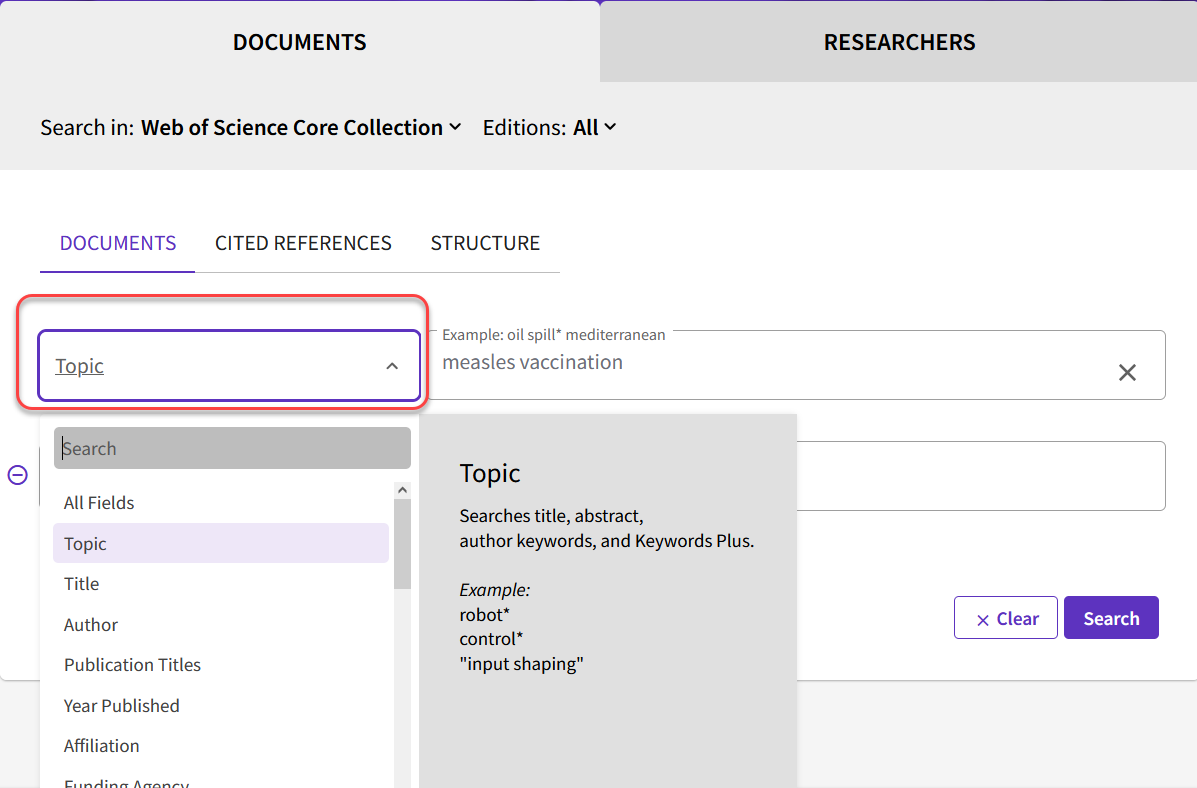
Figure 1.2
To expand on your search, you can add rows and select the Boolean operator (AND, OR, NOT) from the pull-down option.
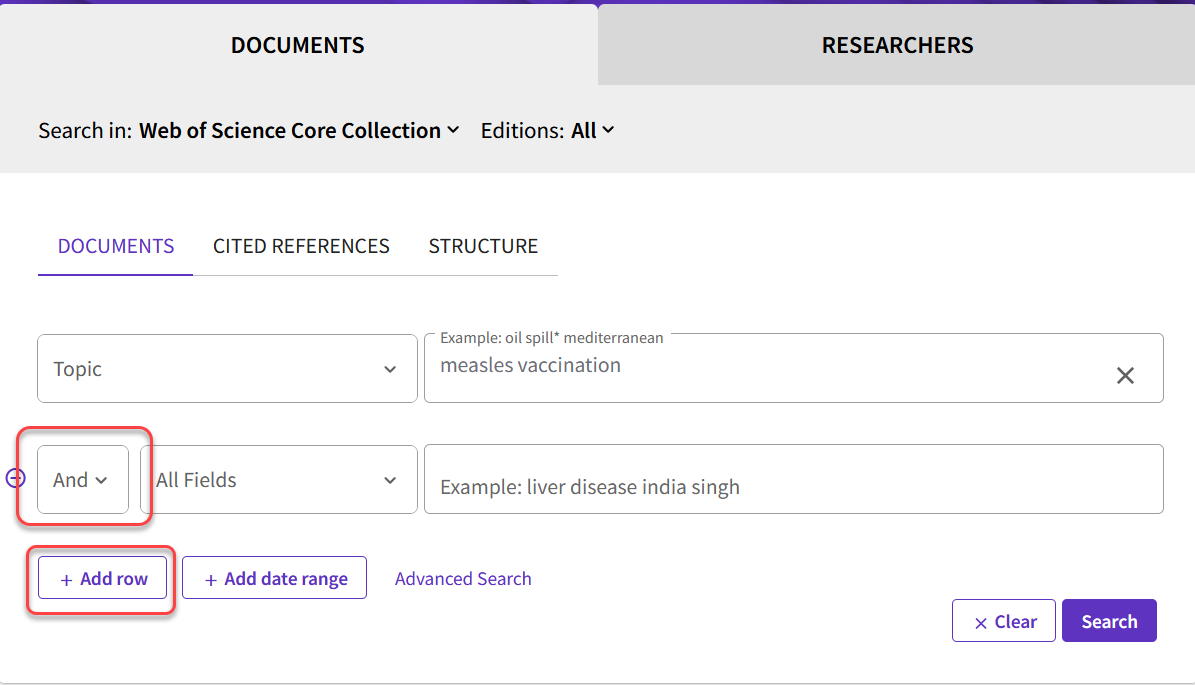
Figure 1.3
You can peruse the citations on the Results page, highlight those you want to print, email, or save, or filter the results using parameters like publication year, language, subject, and document type:
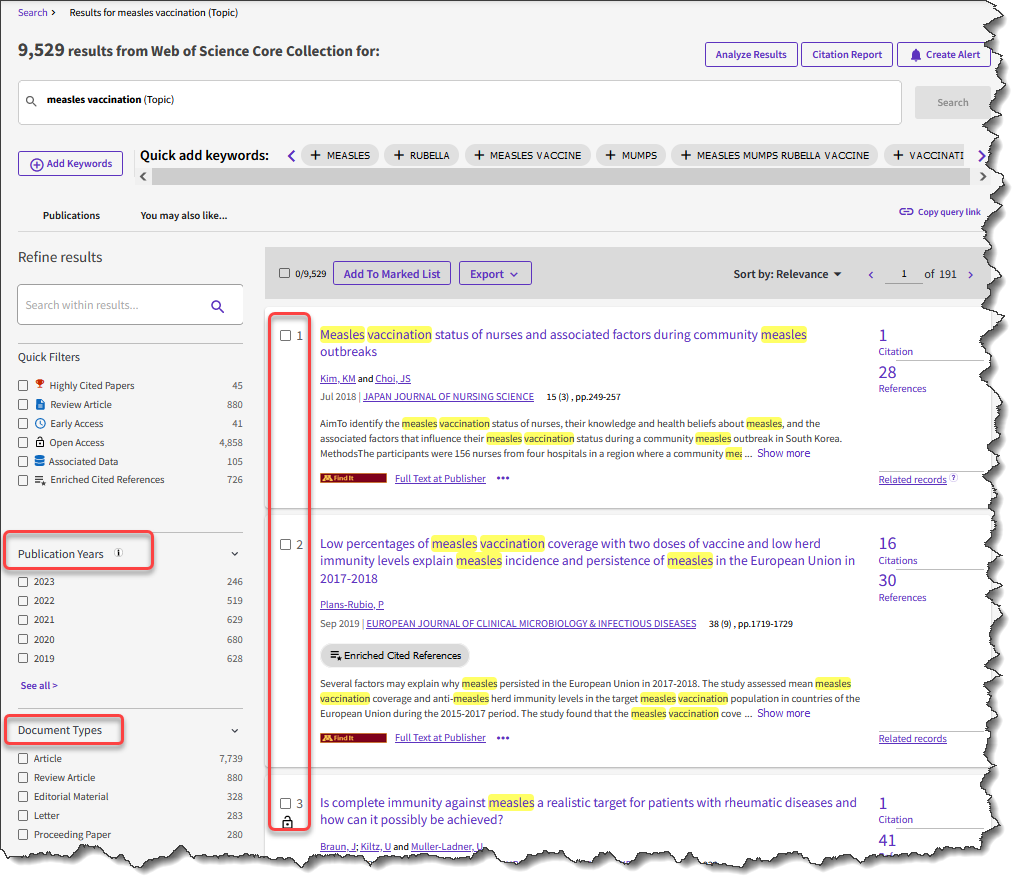
Figure 1.4
How to locate cited references using the Web of Science
You can use the ISI Web of Science, a component of the ISI Web of Knowledge, to find references that cite a specific author or journal article. This is called a cited reference search.
Once you are in the Web of Science main interface, click on the Cited References just above the search box.
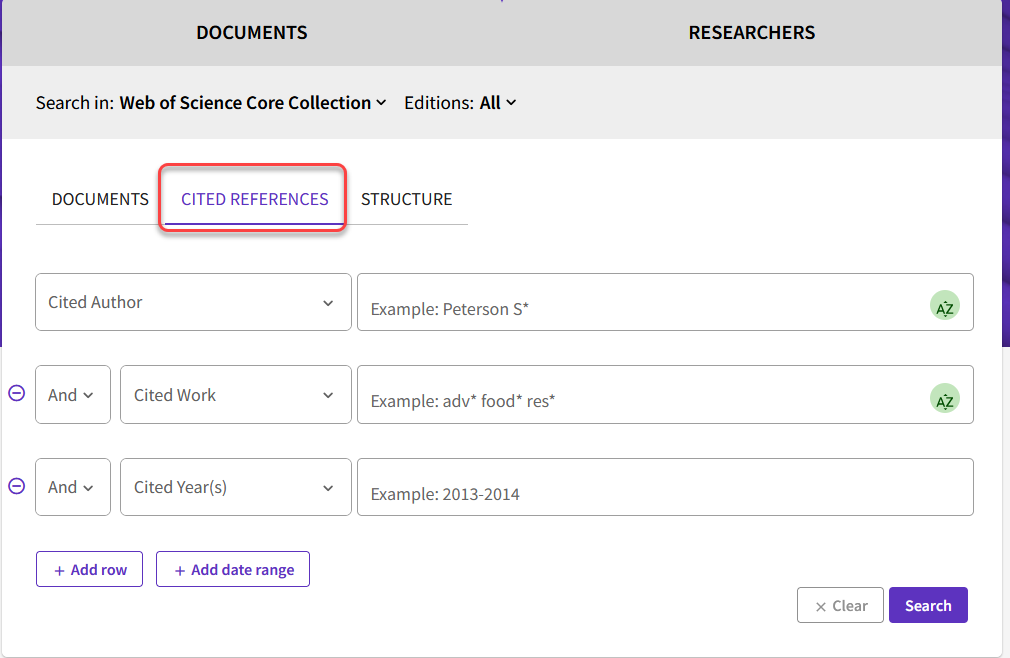
Figure 1.5
Enter the author's name, the journal's abbreviation, and the publication date in the Cited Reference Form. Next, select Search: Next, click See Results after choosing the citation that corresponds to the article you need to view.
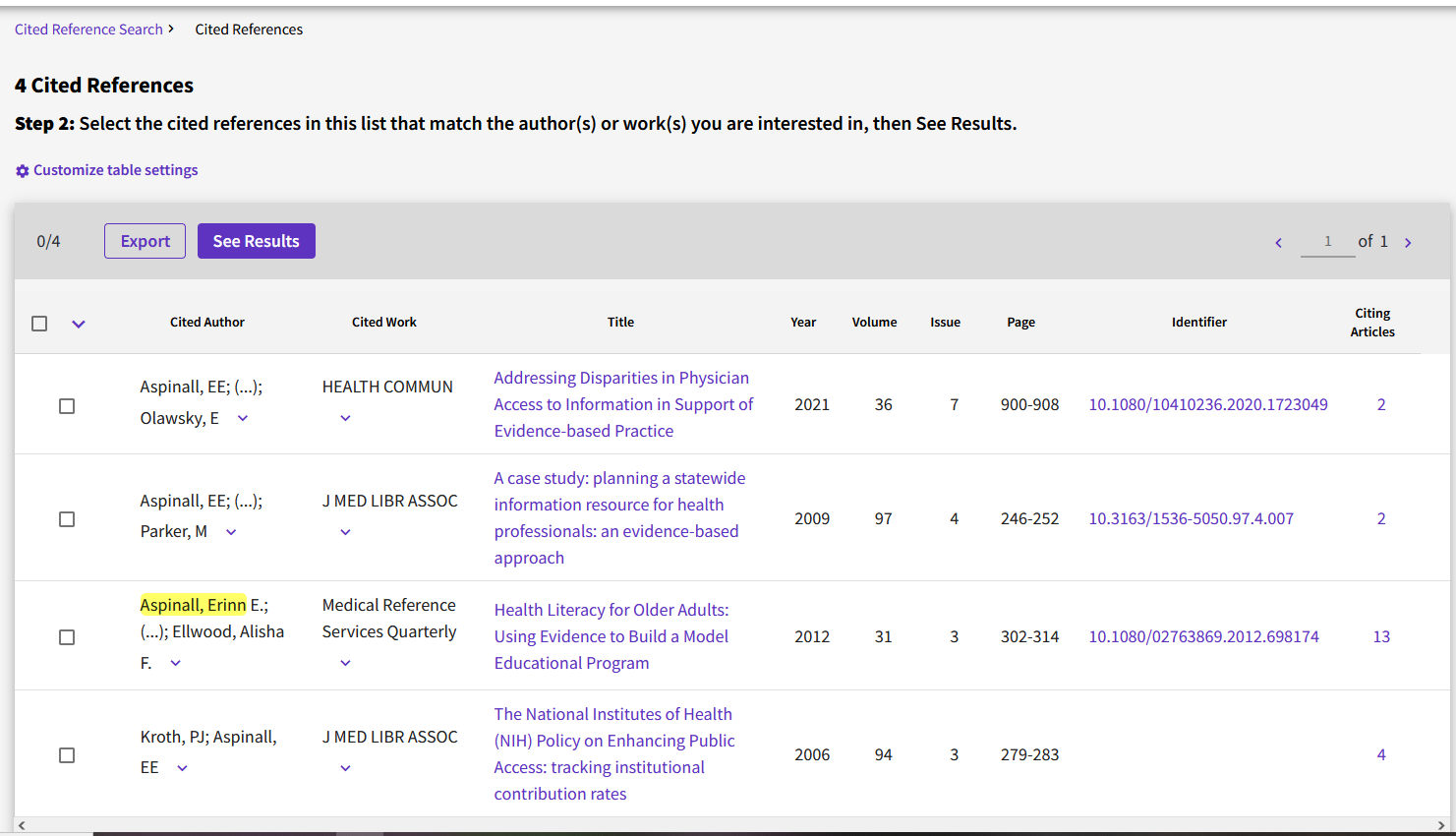
Figure 1.6
The whole list of citations (since 1975) for this specific work will be found on the Results page:
